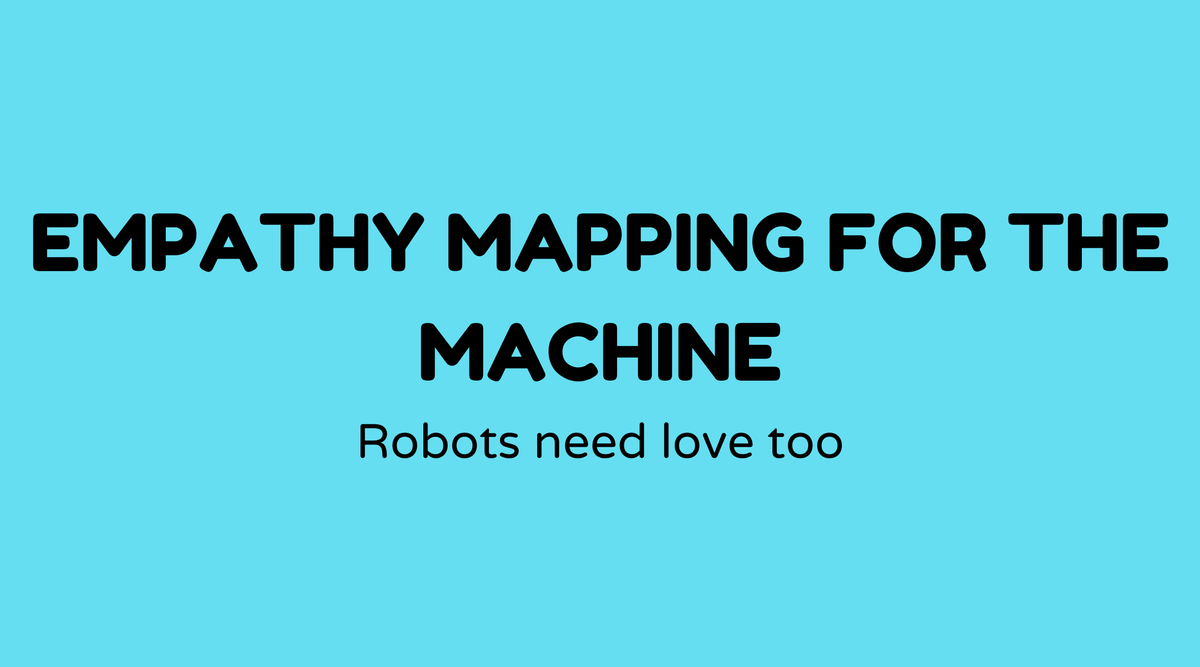Empathy Mapping for the Machine

Overview of Empathy Mapping for the Machine Workshop:
Empathy Mapping provides insight into your customers' experiences, giving you a glimpse of what it's like to understand their perspectives. This helpful tool goes beyond basic observations, assisting teams in gathering the thoughts, feelings, needs, and actions of users. An Empathy Mapping for the Machine workshop focuses on converting these insights into usable data for AI and machine learning advancements, ensuring technology aligns with genuine human emotions.
Why Empathy Mapping for the Machine Workshop is Important:
In a technology-driven landscape, grasping emotions in a format that machines can interpret is essential. When machines comprehend user emotional states and preferences, they become more responsive, understanding, and engaging. An empathy mapping exercise helps pinpoint these emotional cues, enhancing user satisfaction and loyalty. Moreover, it’s an opportunity to make AI not just intelligent, but also emotionally aware.
What is Empathy Mapping for the Machine Workshop:
An empathy mapping workshop is a collaborative endeavor where participants create a visual representation detailing various aspects of a user's experience. When focusing on AI, this visual aid assists in translating human empathy into machine learning models. It entails collecting data on user thoughts, feelings, and behaviors and transforming it into an insight-rich framework for machine learning applications.
How to Conduct Empathy Mapping for the Machine Workshop:
-
Assemble a Diverse Team: Bring together team members from various departments to gather different viewpoints.
-
Define User Personas: Clearly outline the personas whose experiences you are examining.
-
Create the Empathy Map: Use a large board, dividing it into segments such as Says, Thinks, Feels, Does. Record relevant information and insights in these categories.
-
Data Analysis and Interpretation: Convert these insights into data formats suitable for AI systems.
-
Incorporating Feedback: Ensure ongoing revisions by collecting user feedback after implementation.
Pro Tip: Utilize tools like Miro or MURAL for crafting digital empathy maps that can be modified in real-time by remote teams.
Sample Agenda of Empathy Mapping for the Machine Workshop:
Here’s a concise agenda to ensure success in your workshop:
| Time | Activity | Description |
|---|---|---|
| 9:00 AM | Introduction | Overview of objectives and importance |
| 9:30 AM | Persona Creation | Define and discuss user personas |
| 10:00 AM | Empathy Mapping | Breakout groups to brainstorm and fill empathy maps |
| 11:00 AM | Data Synthesis | Analyze and condense insights into data formats |
| 12:00 PM | Lunch Break | |
| 1:00 PM | Application | Discuss how insights fit into machine learning models |
| 2:00 PM | Feedback Collection | Gather feedback on usability and effectiveness |
| 3:00 PM | Wrap-up and Q&A | Summarize key takeaways and open the floor for questions |
Examples of Empathy Mapping for the Machine:
Let’s take a look at practical applications:
-
Voice Assistants: Adjusting emotional tones into contextual responsiveness in devices like Alexa or Google Assistant.
-
Chatbots: Improving chatbots to better recognize and react to customer mood fluctuations based on textual analysis.
-
Healthcare AI: Predictive models in patient care that detect signs of emotional distress through patient data, enhancing well-being and treatment approaches.
FAQs
What is the primary purpose of an empathy mapping workshop for machines?
- The main goal is to bridge the emotional divide between users and machines, allowing machines to comprehend and relate better to human emotions.
How can empathy mapping benefit artificial intelligence?
- By equipping AI with insights into human emotions, empathy mapping allows machines to deliver more personalized and relatable responses.
Is technical expertise required to participate in such a workshop?
- Not necessarily. While some technical knowledge can be beneficial, the value of empathy mapping lies in diverse perspectives, so everyone can share meaningful insights.
How frequently should a machine-oriented empathy mapping workshop be conducted?
- It's advantageous to hold them regularly, especially when user needs or technological capabilities evolve, ideally at least twice a year.
Can these workshops impact product development?
- Absolutely! They encourage empathy-driven innovation, often revealing new approaches to enhance product features to meet user emotional needs.
What tools are recommended for conducting empathy mapping workshops remotely?
- Online collaboration tools such as Miro, MURAL, or Google Jamboard are excellent for facilitating virtual workshops and ensuring active participation from remote teams.



